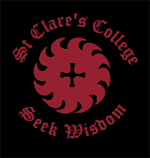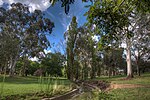St Edmund's College, Canberra
St Edmund's College, Canberra is an independent Catholic primary and secondary school for boys, located in Griffith, a suburb of Canberra, in the Australian Capital Territory (ACT), Australia. The college was established in 1954 by the Christian Brothers as St Edmund's War Memorial College. It was opened to meet the demand for a Catholic education school in the region and was the first Catholic secondary boys' college established in the ACT. St Edmund's College practises in the tradition of Edmund Ignatius Rice. The current principal of the college is Joe Zavone. Students are placed into houses for sporting and other events. The current houses and colours are: Clancy (yellow), Treacy (dark blue), O'Brien (white), Haydon (red), Mulrooney (sky blue) and Rice (green).
Excerpt from the Wikipedia article St Edmund's College, Canberra (License: CC BY-SA 3.0, Authors).St Edmund's College, Canberra
Canberra Avenue,
Geographical coordinates (GPS) Address Website External links Nearby Places Show on map
Geographical coordinates (GPS)
| Latitude | Longitude |
|---|---|
| N -35.3228 ° | E 149.1454 ° |
Address
St Edmund's College
Canberra Avenue 110
2603 , Griffith
Australia
Open on Google Maps










